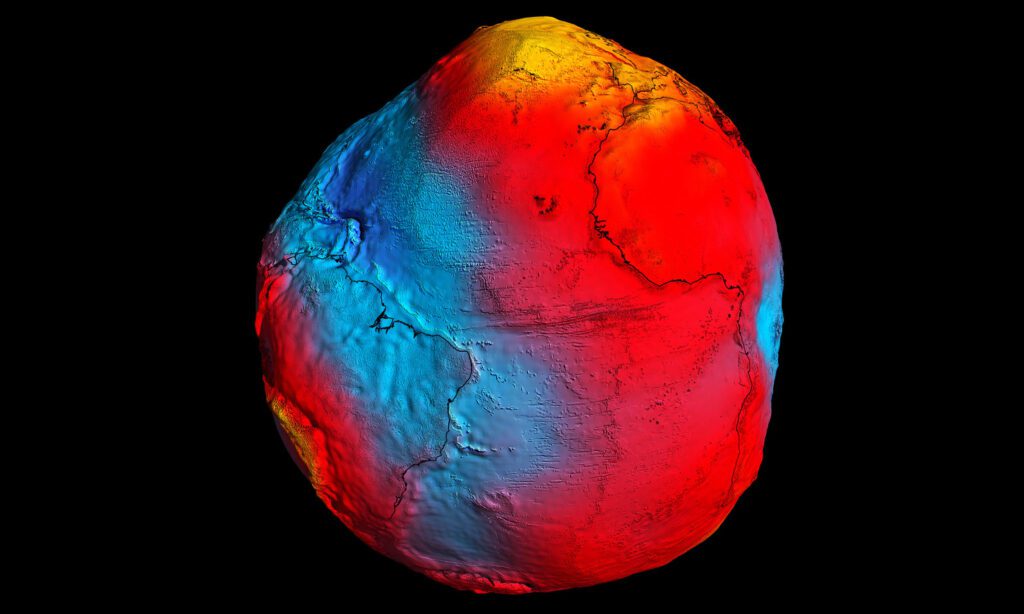The article discusses the Indian Ocean Geoid Low (IOGL), an area where the geoid—an invisible sea level defined by gravity—drops approximately 330 feet (100 meters) below the global average. This anomaly raises questions about its formation, particularly since there are no visible geological scars on the ocean floor.
Research led by Devanjan Pal involved computer simulations of mantle flow over 140 million years to understand the forces creating the IOGL. The findings indicate that the depression is linked to subduction processes. As older oceanic slabs descended, they interacted with a hot, low-density region in Africa’s mantle, creating buoyant plumes that influenced surface gravity.
The study correlates modern gravity measurements and seismic data, which reveal temperature disparities in the mantle, to explain the geoid anomaly. Improved seismic observations are needed for a clearer understanding of the deep mantle structures affecting the geoid.
This research blends historical plate motion, mantle dynamics, and gravity data to underline the connection between ancient subducted crust and present-day gravitational signatures in the ocean, shedding light on the geological history of the region.
Source link


